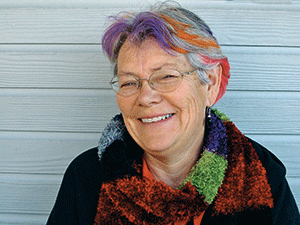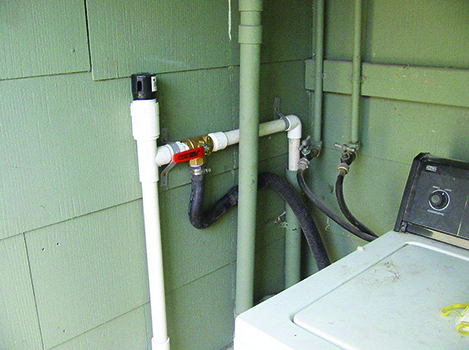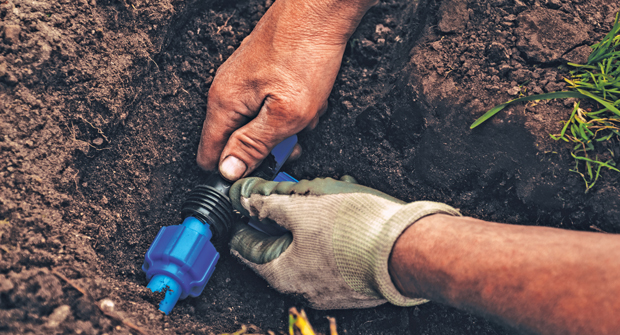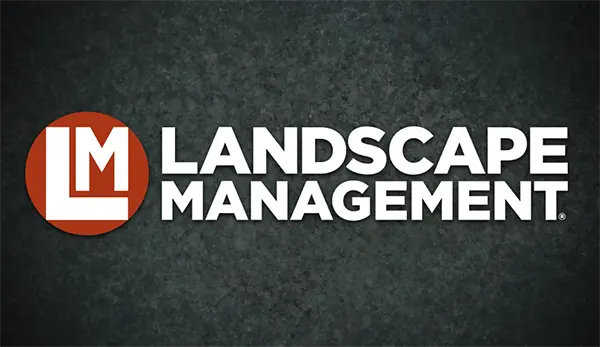
The first graywater systems installed by EarthCare Landscaping in Cupertino, Calif., were complex, messy projects. A decade ago in California, graywater—the wastewater generated from a home’s washing machines, sinks, dishwashers and showers—was deemed equivalent to sewage, and the state made sustainable-minded homeowners, who saw usable water quite literally going down the drain, jump through complicated hoops to make use of it. Permits, mandated 9 inches of underground tubing and upward of $6,000 in material costs meant few homeowners could utilize their graywater as a way to irrigate their landscapes and save thousands of gallons of water each year.
“It looked like giant gophers had trashed someone’s yard,” says Deva Luna, EarthCare Landscaping’s horticulturist, manager and principal designer of these early projects. The company has done about a half dozen of them over the past 10 years. “It was kind of alarming how it had to be done.”
Since then, some states have come around to the benefits of graywater. After a series of droughts, California changed its graywater standards in 2009, allowing landscape companies to offer low-cost, low-maintenance systems to clients interested in saving water and, ultimately, money. Like with other “green” home improvements, such as solar panels or energy-efficient windows, municipalities even have started offering incentives for homeowners to invest in graywater.
The Santa Clara Valley Water District (SCVWD) in San Jose, Calif., introduced its Laundry to Landscape Rebate Program earlier this year. Companies like EarthCare Landscaping, a $1 million firm that offers landscape design, installation and maintenance services to residential clients, now have even more incentive to promote graywater conversions as a water-saving strategy.
“This is tremendous support for the whole process,” Luna says. “I’ve seen such a rise in public awareness.”
EarthCare Landscaping hasn’t installed a laundry-to-landscape system yet, though Luna is certified by Greywater Action in the installation process and says an average system would require $100 to $200 in materials and take a three-man crew about two days to complete using simple hand tools. The process is significantly easier than it used to be, Luna says, as laundry-to-landscape systems don’t require a permit and the tubing needs to be trenched just 2 inches underground. Pricing the service from the contractor standpoint varies, she says, based on the complexity of the job and the layout of the client’s home.
In a laundry-to-landscape system, graywater from a homeowner’s washing machine is directed to a specified portion of a landscape through a three-way valve and poly tubing. The graywater is collected in an underground basin filled with mulch; plants are watered using a flood irrigation technique.
Virginia O’Rourke, water conservation specialist for the SCVWD, recommends graywater systems for hardy plants such as fruit and ornamental trees, large shrubs and groundcover. She suggests homeowners use gentle detergents that won’t harm the plants.
So far this year, more than 100 homeowners have contacted the SCVWD for information about graywater, about 20 have applied for the $200 Laundry to Landscape rebate, and more than 40 have signed up for the district’s graywater workshops. But regardless of the numbers, O’Rourke is most encouraged by the increased levels of interest and enthusiasm.
“The program will be viewed as successful as long as the district is able to help educate the public,” O’Rourke says. “(We) would like to help people understand what graywater
is, how (it) can be used, and how to properly install a graywater system.”
One challenge of installing laundry-to-landscape systems is projects are site specific, based on a clients’ homes and water use. Sherri Osaka, owner of landscape design firm Sustainable Landscape Designs in San Jose, provides consultations to homeowners who are interested in graywater. For a fee of $250 to $500, Osaka goes to a client’s home and discusses factors such as the type of washing machine they have, average amount of laundry they do, where the washer is located and which area of the landscape would most benefit from graywater. After analyzing a year’s worth of water bills and running some numbers, she can tell homeowners how much water they could save annually—anywhere from 1,000 to 11,000 gallons—and can then design them a graywater system for a similar fee.

Osaka is certain the interest in graywater will continue to grow as water becomes a scarcer commodity in California and beyond. While only three of Osaka’s primarily residential clients have installed graywater systems in the past 15 years, she currently is working on her first Laundry to Landscape system design. She makes it a point to promote the program to each of her clients.
“California and other parts of the country, too, are experiencing more and more droughts, and graywater is a really great way to help a landscape survive because that water is available even when it’s dry,” Osaka says. “Graywater systems have become easy and legitimate. It makes sense, and the payback is there.”
Photos: EarthCare Landscaping


